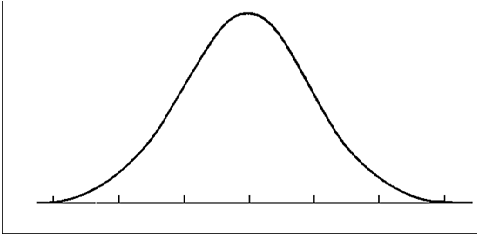What if I told you that there was a simple mathematical rule that explained nearly everything from the size of cities to the frequency of certain words in a given language to the success (or failure) of individual investments?
You might think it’s impossible for such a simple rule to exist.
But it’s true. You might be familiar with something called the Pareto Principle – which states the “bell-curve” distribution in simple terms.
The Pareto Principle asserts that all statistical phenomena follow the 80-20 rule. Eighty percent of all the stock market’s gains come from 20% of stocks – for instance.
Or – more cynically – that 80% of everything is crap. Books, TV, jobs, literature, happiness, death, crime, disease – all of these aspects of the measurable world all follow the same basic rule of 80-20 – which again, just states in simple terms the nature of the bell curve.

Amazingly, this law even describes the natural world. The earth’s crust is primarily comprised of oxygen, silicon and aluminum. Those three substances account for over 80% of the earth’s mass. You might think there’s a lot of iron in the earth’s crust, and you’d be correct, but it comprises only 5% of the total mass.
Another version of this rule is called “Zipf’s Law” – which again is just restating the bell curve.
But Zipf’s Law was first used to address the frequency of words in a language.
It states, “The frequency of any word is inversely proportional to its rank in the frequency table.”
In other words, the 100th most frequent word is 1/100th as common as the most frequent word.
Or the second-most frequent word is half as frequent as the most frequent word.
Bored yet?
Okay, the investment implications should be clear. Most modern portfolio managers and market theorists urge their clients and investors to diversify. Unfortunately, that means most people actually seek out inevitably sub-par investments to round out their diversified portfolio.
The downside of being ill-diversified is that you might end up on the low side of the curve. But since most investments are found in that middle 20%, it’s likely that by diversifying, you’ll end up in the middle anyway.
Now, I can’t tell you how to invest. But I can tell you that this type of distribution has convinced me to find a relatively small number of investments to put my investable income into.
Most of my cash (a little over 50%) is in physical gold and silver at this point.
Rounding out my portfolio, I have a modest but growing 401(k), I have some shares of blue-chip dividend payers, a savings buffer in a regular old savings account, and a handful of speculative stocks.
Eighty percent of my investable income is in cash, precious metals and a small number of stocks. That might seem crazy, but the Pareto Principe, Zipf’s Law and the bell curve have convinced me that it’s a waste of time and money to get any more diversified.
It’s my belief that assets like gold and silver are likely to account for the bulk of the future price appreciation in the investment world. I expect gold and silver to be about twice as profitable as blue chip dividend payers, and I expect speculative stocks and bonds will be much further down the list.
You and I might disagree on the rankings, but it’s a mathematical certainty that very few assets will account for almost all of the gains in the coming years.
It’s a question of which one. I’m casting my lot in with commodities – and I’m almost completely ignoring everything else for the time being.
 Facebook
Facebook
 Twitter
Twitter